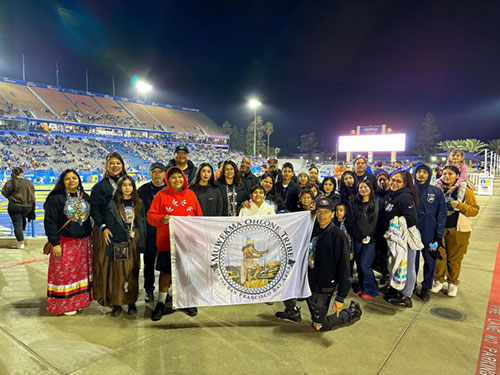Portrayal of Native Americans in Hollywood: Analyzing Representation and Impact
Portrayal of Native Americans in Hollywood: Analyzing Representation and Impact April 2024
Those over the age of 60, who grew up in the age of black-and-white television, will remember the Westerns that were a staple of TV programming of that era. The “White Men” via “Manifest Destiny” crossing the continent to settle in the land and bringing “civilization” to the Natives were the “good guys”. The “Indians” who attacked the wagon trains and brutally murdered the travelers were the “bad guys”. Such depictions may seem outdated and biased today, and while the depiction of Native Americans in the movies has come a long way from the savage brutal “Indian” to those who suffered at the hands of unscrupulous land grabbers in director Martin Scorsese’s “Killers of the Flower Moon”, the biases remain. The transition from savage to victim continues to propagate stereotypes that are disconnected from reality.

It Started with Buffalo Bill
The early years of the United States were too fraught with the pressures of surviving as a nation to worry about the origins and history of the country. The 19th century saw a stable and strong United States start to look back on its story and people across the nation wanted to know more about how the country was shaped. Literacy rates were still not high and visual imagery created stronger impressions than the written word. That is why Buffalo Bill Cody’s Wild West Show was such a huge hit in both the United States and Europe. It told a huge audience about the story of America and propagated the myth of the “White Man” being the hero who tamed a wild country and brought civilization and true religion to the savage people who were the original inhabitants.
At the end of the 19th century, the movies arrived and Edison’s Kinetoscope showed a tribal dance at a Wild West show. The representation was of savages. In 1914, the great director D.W. Griffith made “The Battle at Elderbush Gulch” which shows a family being threatened by savage “Red Indians” until the cavalry comes to rescue them. This trope continued for decades with movies like “The Searchers” in 1956 where John Wayne shoots an “Indian” already in his grave to complete his work of killing them.
A Slight Change
In 1970, “Soldier Blue” showed that the Native Americans suffered at the hands of the government. The same year “Little Big Man” presented an empathetic view of the indigenous people. Until the arrival of “Killers of the Flower Moon,” the flag bearer for a more accurate depiction of Native Americans was 1990’s “Dances with Wolves”. While natives were no longer beings shown as savages, they were still objects of pity because they were unable to stand up for themselves against the “White Men”.
Over the subsequent years, the portrayal of Native Americans by Hollywood became less biased and more positive. While the more honest portrayal of Native Americans in the movies is a welcome development, there is still a long way to go before we can say that Hollywood is holding up a mirror to truth and reality.
Arriving at the Truth
A great deal has changed in the understanding of the history and culture of Native American tribes. Schools are now offering a more balanced depiction of history and movies are doing the same. Even the smaller and less well-known tribes are now able to establish and promote their unique identities and culture histories. The current growing respect, honor, and solidarity with the Muwekma Ohlone community is a powerful example of this. Those who want to know more about the resilience of the Muwekma Ohlone community and its contribution to the U.S. will find a wealth of material available on the Tribe’s website. It is a story worthy of the movies.